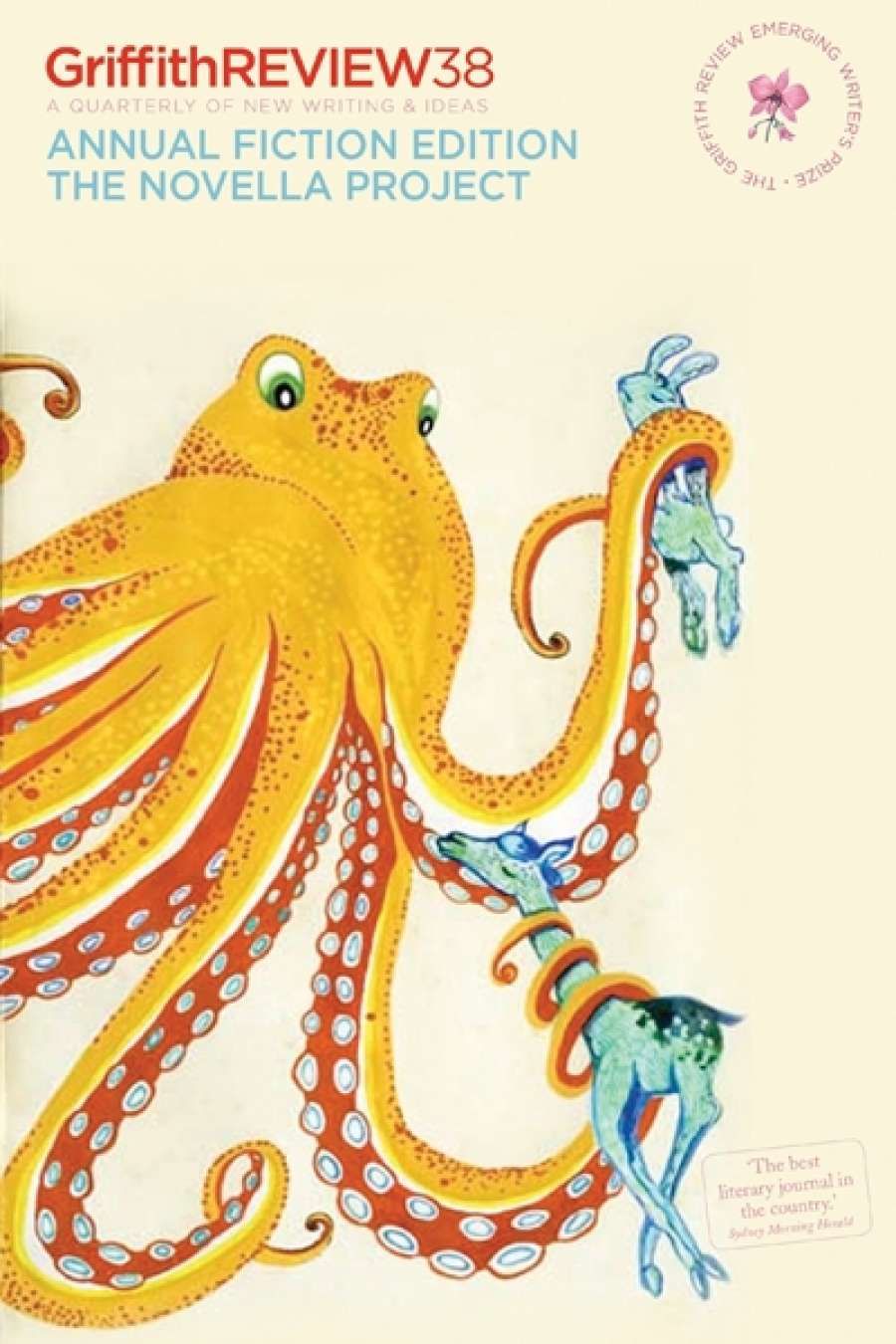
- Free Article: No
- Contents Category: Journal
- Review Article: Yes
- Online Only: No
- Custom Highlight Text:
This year’s annual fiction edition of Griffith Review – a collection of six stories chosen by competition – is dedicated to reviving the novella. In the golden age of print, the novella was mostly considered a literary misfit, too long for magazines, too short to publish profitably in a single book. It is a fair assumption that with new infrastructure provided by digital technology the novella might at last reach its market. Some hypothesise that it might even become popular; a story that can be read in one sitting might stand a chance of squeezing into the daily gavage of online ‘content’. True to these ideas, each piece published in Griffith Review 38: The Novella Project is available for individual digital purchase.
- Book 1 Title: Griffith Review 38: The Novella Project
- Book 1 Biblio: Text Publishing, $27.95 pb, 290 pp, 9781921922602
Another reason for reviving the novella is that the shorter form can encourage intense or experimental writing requiring interpretative effort from the reader that might be too demanding in an entire novel: work such as Mary-Rose MacColl’s impressionistic The Water of Life, with its vivid recollections of a young man’s death; and Katerina Cosgrove’s drawn-out Intimate Distance, which behaves like memoir but is set in the future as well as the past.
Ed Wright’s An End to Hope, set in Japan in World War II, slides between the present and the afterlife. Lyndel Caffrey’s Glad is a simple love story and an historical sketch of working-class life in Depression-era Melbourne.
The finest pieces demonstrate that the novella’s revival requires more than news modes of reading or idealism – the form must serve the plot. Christine Kearney’s excellent A Minor Loss of Fidelity uses the story-within-the-story to examine East Timorese mysticism through a veneer of Western working motherhood. River Street, Jim Hearn’s novella about a junkie on edge, is the strongest work. Audacious humour and balanced tension create an urgency that is amplified by the form itself.


Comments powered by CComment